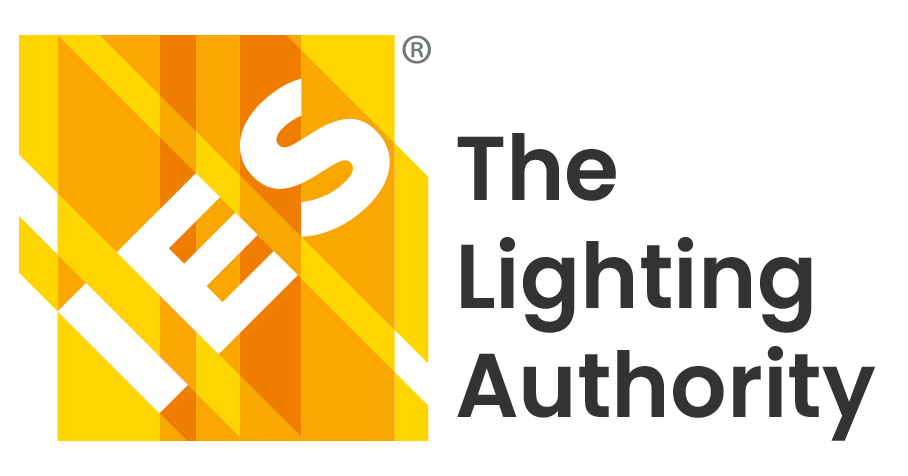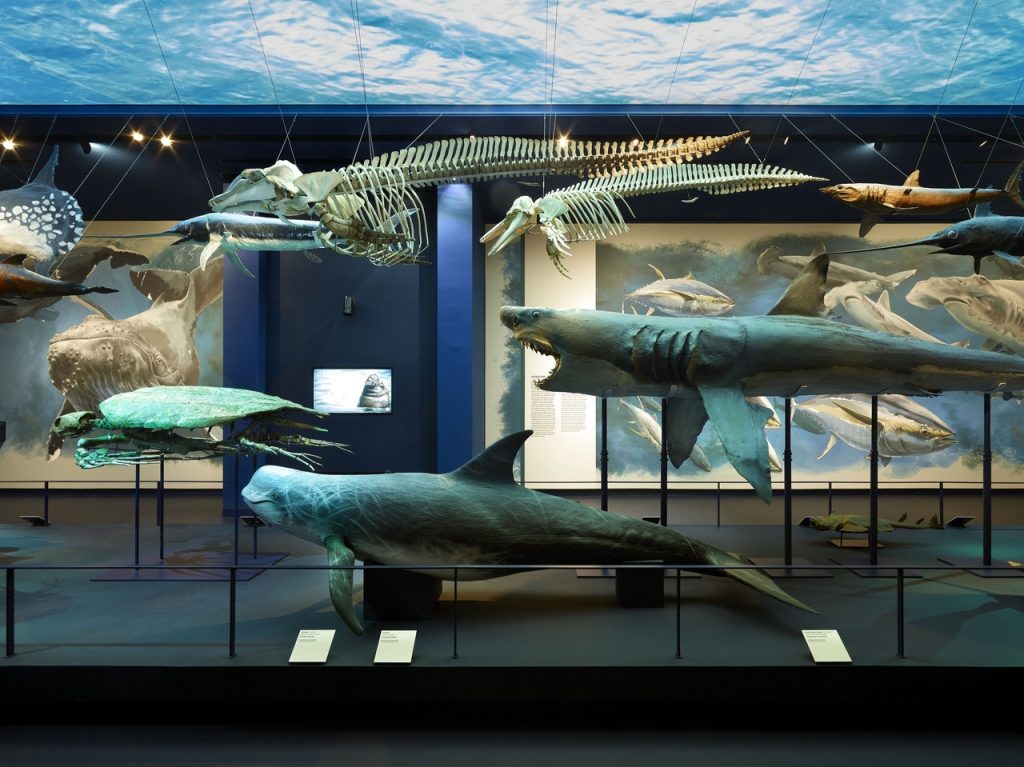Non-invasive illumination helps aid storytelling at the Museum of Nature and Humankind
An 800th birthday demands a grand celebration. So, what better to way to celebrate than with the opening of a museum focused on the anthropological, geological, mineralogical, paleontological and zoological wonders of the world? The roughly 200,000 artifacts and objects of the Museo della Natura e dell’Uomo (Museum of Nature and Humankind) in Padua, Italy, were brought together by the Università di Padova, established in 1222, to make viewable its large collection and continue the education of studenti and turisti alike. Situated around the Palazzo Cavalli, a medieval palace, and directly opposite the Scrovegni Chapel, and near the city’s botanical garden, the multi-media museum opened in 2023, a year later than expected due to COVID-related delays. Florence-based Studio Massimo Iarussi, a firm specializing in museum illumination, was chosen to design the lighting strategy for all the exhibit halls, while exhibition design was curated by Guicciardini & Magni Architects. The extensive halls comprise 50 rooms, spread over three floors, totaling approximately 4,000 sq meters (~43,000 sq ft).
The trick of the lighting scheme by Massimo Iarussi, owner of the firm, and his colleagues was to keep the light fixtures hidden—much like the age-old trick of concealing the candlelit cake until the perfect moment at a birthday party. “A recurring element in our projects is that the light is perceived in a non-invasive way, which never offends the visitor,” said Iarussi. “Rather, the light must capture the visitor and help to tell the story of the visit. It must be virtually invisible; it must make objects, spaces, volumes and surfaces visible, [but] it must limit itself to emphasizing the architecture and objects on display without imposing itself. Where it is not possible to completely hide the luminaires from view, we try to adopt equipment with a sober shape, which does not impose itself by its presence.”
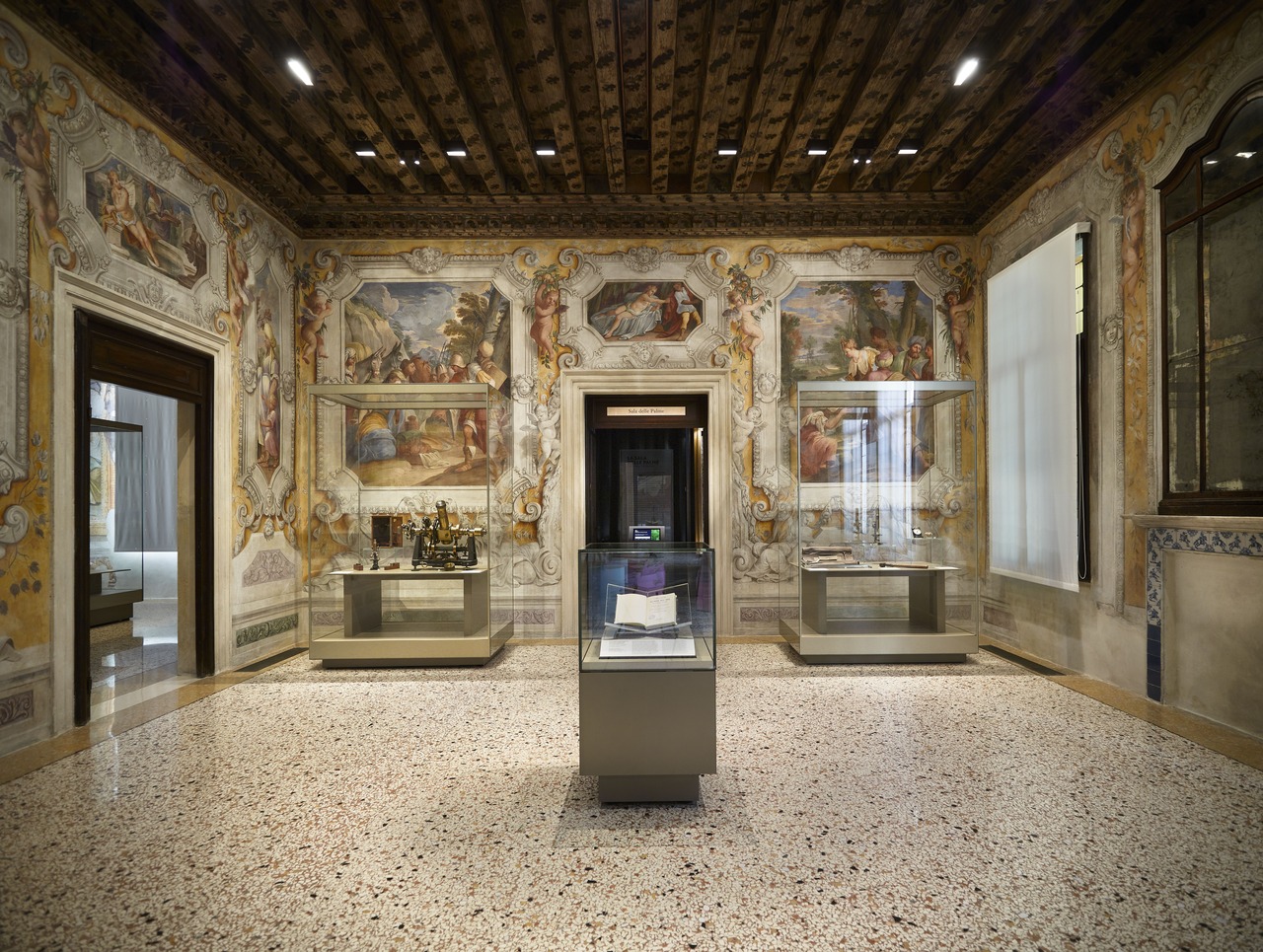
The task the design firm faced was that of achieving not just an imperceptible lighting system, but one that created a sense of uniformity amidst the vast range of display items across a multitude of spaces. “Most of the exhibition rooms are part of historic buildings and, in many cases, the lighting had to take into account the surrounding context as well as the exhibits,” said Iarussi.
To combat the hurdle, LED luminaires were set to a warm 3000K, with occasional variations to suit the setting. For instance, in historic sites, an even warmer 2700K was selected. In the marinelife exhibits, filled with information on creatures from the blue-velvet depths, lights were set to a cooler 4000K to evoke the nature of the sea. Here, the team dove deeper into the theme with additions such as a false, backlit skylight enhanced with a water-like digital print, and “Rosco shapers from the X-Effects series were used, with a color temperature of 5500K, equipped with a blue filter and rotating gobo, to provide the sensation of movement,” said Iarussi.
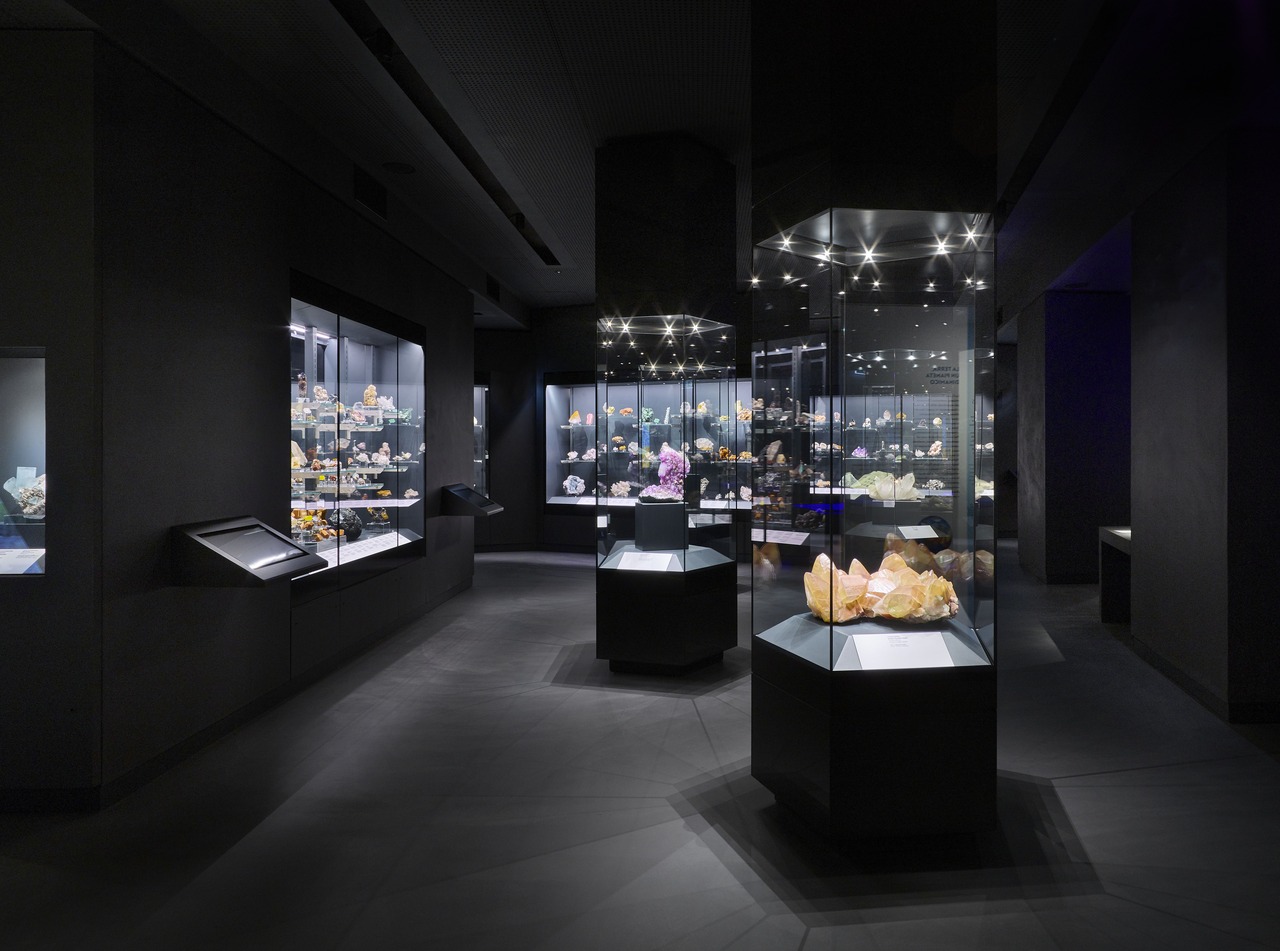
Italian-made display cases by Goppion, like decorative gift boxes, were selected for use throughout the project and are equipped with internal climate control and miniature light projectors integrated into the cases. Showcases holding especially delicate objects are illuminated with the same miniature projectors placed outside the glass, so as to not interfere with internal microclimates.
“Illuminance levels vary depending on exposure. In general, illuminance levels on objects are moderate and do not exceed 150 lux (~14 footcandles),” explained Iarussi. “In rooms with more sensitive objects, the maximum illuminance does not exceed 50 lux (4.6 fc), consistent with the standards for conservation. Dedicated luminaires have been adopted for cleaning and maintenance operations, which provide greater illuminance on the walking surface, but refer to a dedicated [light scene], which is switched on only for the minimum time necessary to carry out these operations.”
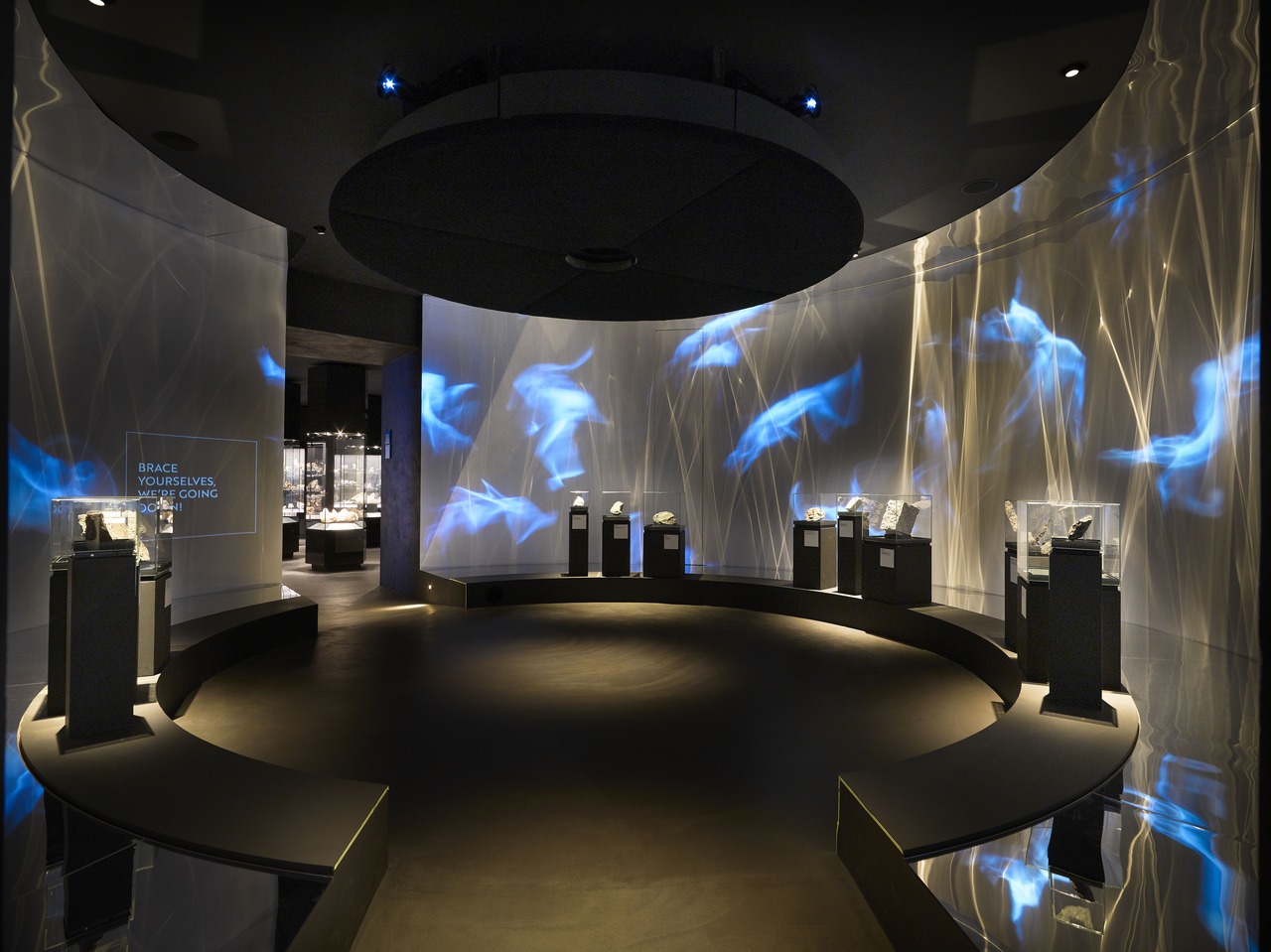
Many of the fixtures the design team selected for use throughout the museum are spotlights from the Yori series by Italian manufacturer Reggiani, with an assortment of sizes and key precision optics. “Precision optics are crucial, capable of brushing objects that you want to highlight from time to time, without polluting the adjacent objects that you want to leave in semi-darkness,” added Iarussi. A DALI control system works in tandem with the semi-hidden light fixtures to help set the scene for each room. The control system allows individual spotlights to be adjusted to optimal diming levels, and in certain instances, light scenes alternate and adapt to various multimedia projections; others are controlled manually.
Since it’s opening, the museum welcomed 500,000 guests to its “party” in 2023 alone. Who’s to say how many visitors will have walked through its halls of gems, fossils, bones and more once it turns 800 like its university parent. What kind of party will it host then, and who will set up the lights?
Radiant Frescos
Frescoes adorn the walls at the entryway of the museum, located at the Palazzo Cavalli—the historic core of the institution. To make it appear as if the frescoes were illuminated “by their own light,” the team implemented custom-made luminaires by Tuscany-based manufacturer Zero55. A special wall-washing optic allows for vertical uniform illumination without casting shadows on the upper section of the wall. To ensure guests didn’t notice where the light was actually coming from, Iarussi explained, “This optic was placed in a casing designed for installation between the [fixture’s] joists.”
At A Glance
- The total cost of the project was €13 million, with the cost of lighting at €800,000.
- The Italian energy code, CAM, was respected but not adhered to, as the code is not mandatory for museum applications.
- Color temperature and light levels unify numerous galleries throughout various buildings.
THE DESIGNERS |
- Massimo Iarussi is an architect, lighting designer and owner of Studio Massimo Iarussi.
- Marzia Bernardini is a lighting designer with, and cofounder of, Studio Massimo Iarussi.
- Serena Caponetti a lighting designer with Studio Massimo Iarussi.
- Massimiliano Ravidà a lighting designer with Studio Massimo Iarussi.
- Guicciardini & Magni Architects served as the leading firm of the design team.
- Gianmario Magnifico and Mauro Garuglieri of Mancini and Associates served as the project engineers.
Photos: Mario Ciampi
